pfSense on Watchguard M370
-
I assume no responsibility for damage to the device. Follow the instructions below at your own risk. Instructions below should only be used for M370 model and may not work for other models in the Mx70 series.
Part 1: Connecting SPI programmer to SPI header
Picture of SPI Header on board:
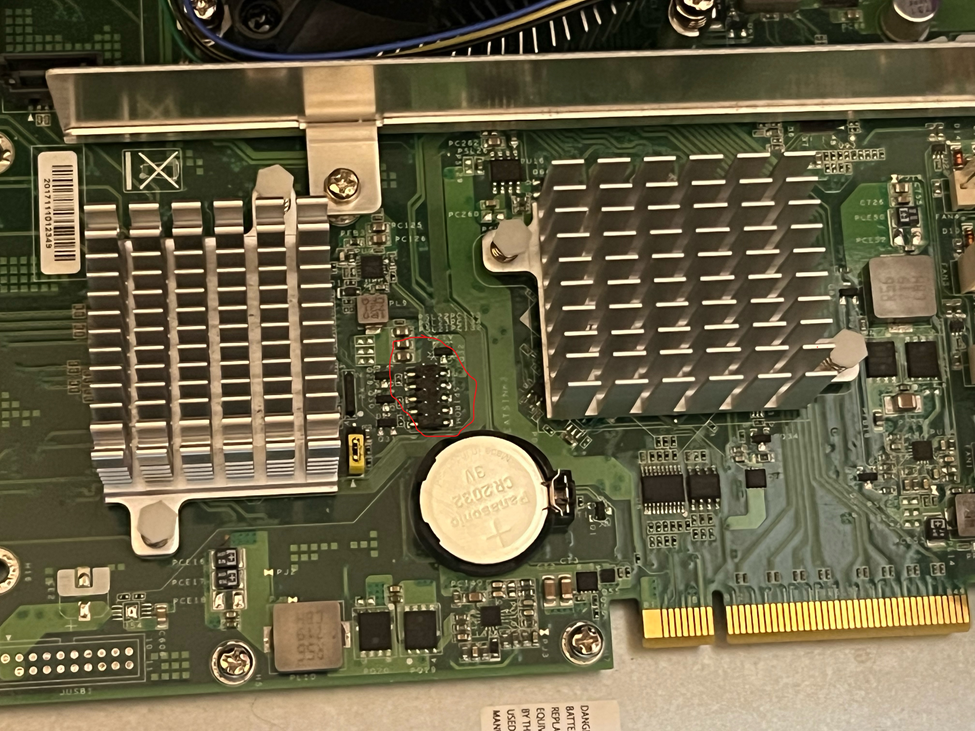
Image of SPI Programmer pins:
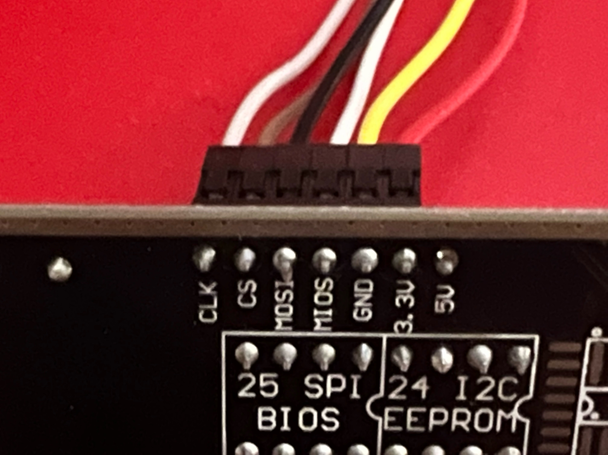
Note: 5v is not used.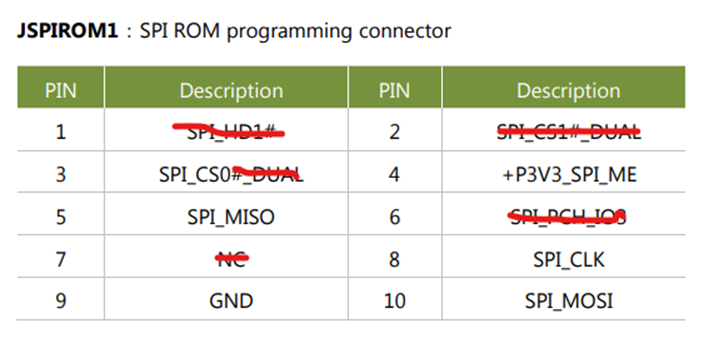
- Unplug power from the M370
- Remove the CMOS battery
- Using the chart above connect the cable from the SPI programmer pins to the corresponding pins on the mobo listed in the chart above (Note: Pins 1,2,6, & 7 are not used, Pin3 is CS (CS0), and Pin4 is your 3.3v power).
- Plug the programmer into a USB 3.1 port or plug into a USB extension cable plugged into a USB 3.1 port. This may work on USB 3.0 port as I believe a 3.0 port should provide the necessary power but I used a 3.1 port.
-
Image of CH341A Black SPI programmer plugged into the header on the board:
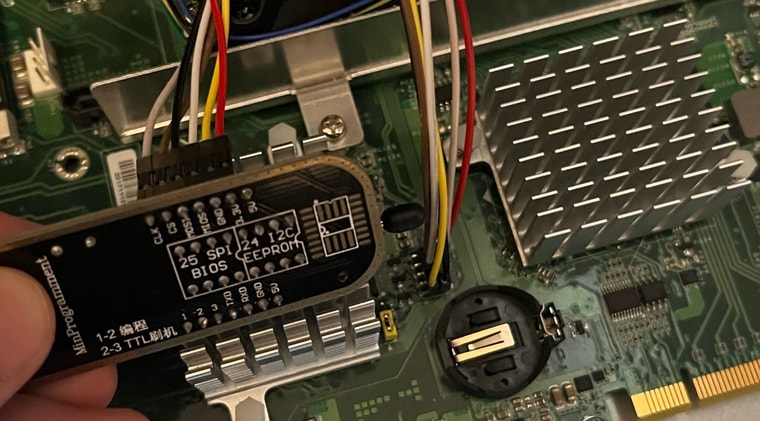
Part 2 coming soon
-
As far as I know the boards are identical across the series so I would expect it to work on any. But that remains untested.
-
@stephenw10 The documentation from Watchguard indicates that the M670 will take a Xeon processor which I believe requires the Intel C236 series chipset and the M370 has a B150 series chipset. The microcode is there on the M370 but I was unable to get it to run the Xeon processor which makes me suspect that at least the M670 has a different chipset, hence the warning. This part is all speculation and should not be referred to as fact. I defer to @stephenw10 here as he has more experience with the Watchguard devices than I do.
-
Well not really with this.
 If you've tried the same Xeon as fitted in the 670 and it doesn't work in the 370 that seems pretty conclusive evidence it must be different to me.
If you've tried the same Xeon as fitted in the 670 and it doesn't work in the 370 that seems pretty conclusive evidence it must be different to me.Steve
-
Same Xeon but the device wouldn't even boot. I don't have any solid evidence on what chipset is in the M470 and M570 but I suspect they may have the C236 chipset as well. I'm currently flashing one of my M370's back to the stock bios so I can document the flash process of the unlocked/modified Lanner bios. Should have Part 2 of this documented by the end of this weekend.
-
Ok i need to get some stuff and then reflash it.
As I remember the xeon microcode was not in the bios.
Update you when I have some progress.
THX
-
The m470 does appear to have a C230 series chipset but I've found that can be misleading:
[2.6.0-RELEASE][admin@m470-2.stevew.lan]/root: pciconf -lv hostb0@pci0:0:0:0: class=0x060000 card=0x20158086 chip=0x190f8086 rev=0x07 hdr=0x00 vendor = 'Intel Corporation' device = 'Xeon E3-1200 v5/E3-1500 v5/6th Gen Core Processor Host Bridge/DRAM Registers' class = bridge subclass = HOST-PCI pcib1@pci0:0:1:0: class=0x060400 card=0x20158086 chip=0x19018086 rev=0x07 hdr=0x01 vendor = 'Intel Corporation' device = '6th-10th Gen Core Processor PCIe Controller (x16)' class = bridge subclass = PCI-PCI pcib2@pci0:0:1:1: class=0x060400 card=0x20158086 chip=0x19058086 rev=0x07 hdr=0x01 vendor = 'Intel Corporation' device = 'Xeon E3-1200 v5/E3-1500 v5/6th Gen Core Processor PCIe Controller (x8)' class = bridge subclass = PCI-PCI pcib3@pci0:0:1:2: class=0x060400 card=0x20158086 chip=0x19098086 rev=0x07 hdr=0x01 vendor = 'Intel Corporation' device = 'Xeon E3-1200 v5/E3-1500 v5/6th Gen Core Processor PCIe Controller (x4)' class = bridge subclass = PCI-PCI xhci0@pci0:0:20:0: class=0x0c0330 card=0x72708086 chip=0xa12f8086 rev=0x31 hdr=0x00 vendor = 'Intel Corporation' device = '100 Series/C230 Series Chipset Family USB 3.0 xHCI Controller' class = serial bus subclass = USB none0@pci0:0:20:2: class=0x118000 card=0x72708086 chip=0xa1318086 rev=0x31 hdr=0x00 vendor = 'Intel Corporation' device = '100 Series/C230 Series Chipset Family Thermal Subsystem' class = dasp ig4iic0@pci0:0:21:0: class=0x118000 card=0x72708086 chip=0xa1608086 rev=0x31 hdr=0x00 vendor = 'Intel Corporation' device = '100 Series/C230 Series Chipset Family Serial IO I2C Controller' class = dasp ig4iic1@pci0:0:21:1: class=0x118000 card=0x72708086 chip=0xa1618086 rev=0x31 hdr=0x00 vendor = 'Intel Corporation' device = '100 Series/C230 Series Chipset Family Serial IO I2C Controller' class = dasp ahci0@pci0:0:23:0: class=0x010601 card=0x72708086 chip=0xa1028086 rev=0x31 hdr=0x00 vendor = 'Intel Corporation' device = 'Q170/Q150/B150/H170/H110/Z170/CM236 Chipset SATA Controller [AHCI Mode]' class = mass storage subclass = SATA pcib4@pci0:0:28:0: class=0x060400 card=0x72708086 chip=0xa1108086 rev=0xf1 hdr=0x01 vendor = 'Intel Corporation' device = '100 Series/C230 Series Chipset Family PCI Express Root Port' class = bridge subclass = PCI-PCI pcib5@pci0:0:28:4: class=0x060400 card=0x72708086 chip=0xa1148086 rev=0xf1 hdr=0x01 vendor = 'Intel Corporation' device = '100 Series/C230 Series Chipset Family PCI Express Root Port' class = bridge subclass = PCI-PCI pcib6@pci0:0:28:5: class=0x060400 card=0x72708086 chip=0xa1158086 rev=0xf1 hdr=0x01 vendor = 'Intel Corporation' device = '100 Series/C230 Series Chipset Family PCI Express Root Port' class = bridge subclass = PCI-PCI pcib7@pci0:0:28:6: class=0x060400 card=0x72708086 chip=0xa1168086 rev=0xf1 hdr=0x01 vendor = 'Intel Corporation' device = '100 Series/C230 Series Chipset Family PCI Express Root Port' class = bridge subclass = PCI-PCI pcib8@pci0:0:28:7: class=0x060400 card=0x72708086 chip=0xa1178086 rev=0xf1 hdr=0x01 vendor = 'Intel Corporation' device = '100 Series/C230 Series Chipset Family PCI Express Root Port' class = bridge subclass = PCI-PCI pcib9@pci0:0:29:0: class=0x060400 card=0x72708086 chip=0xa1188086 rev=0xf1 hdr=0x01 vendor = 'Intel Corporation' device = '100 Series/C230 Series Chipset Family PCI Express Root Port' class = bridge subclass = PCI-PCI pcib10@pci0:0:29:1: class=0x060400 card=0x72708086 chip=0xa1198086 rev=0xf1 hdr=0x01 vendor = 'Intel Corporation' device = '100 Series/C230 Series Chipset Family PCI Express Root Port' class = bridge subclass = PCI-PCI pcib11@pci0:0:29:2: class=0x060400 card=0x72708086 chip=0xa11a8086 rev=0xf1 hdr=0x01 vendor = 'Intel Corporation' device = '100 Series/C230 Series Chipset Family PCI Express Root Port' class = bridge subclass = PCI-PCI pcib12@pci0:0:29:3: class=0x060400 card=0x72708086 chip=0xa11b8086 rev=0xf1 hdr=0x01 vendor = 'Intel Corporation' device = '100 Series/C230 Series Chipset Family PCI Express Root Port' class = bridge subclass = PCI-PCI isab0@pci0:0:31:0: class=0x060100 card=0x72708086 chip=0xa1498086 rev=0x31 hdr=0x00 vendor = 'Intel Corporation' device = 'C236 Chipset LPC/eSPI Controller' class = bridge subclass = PCI-ISA none1@pci0:0:31:2: class=0x058000 card=0x72708086 chip=0xa1218086 rev=0x31 hdr=0x00 vendor = 'Intel Corporation' device = '100 Series/C230 Series Chipset Family Power Management Controller' class = memory none2@pci0:0:31:4: class=0x0c0500 card=0x72708086 chip=0xa1238086 rev=0x31 hdr=0x00 vendor = 'Intel Corporation' device = '100 Series/C230 Series Chipset Family SMBus' class = serial bus subclass = SMBus none3@pci0:1:0:0: class=0x0b4000 card=0x00008086 chip=0x04348086 rev=0x21 hdr=0x00 vendor = 'Intel Corporation' device = 'DH89XXCC Series QAT' class = processor none4@pci0:1:0:1: class=0x020000 card=0x0dc18297 chip=0x04368086 rev=0x21 hdr=0x00 vendor = 'Intel Corporation' device = 'DH8900CC Null Device' class = network subclass = ethernet igb0@pci0:2:0:0: class=0x020000 card=0x0000ffff chip=0x15218086 rev=0x01 hdr=0x00 vendor = 'Intel Corporation' device = 'I350 Gigabit Network Connection' class = network subclass = ethernet igb1@pci0:2:0:1: class=0x020000 card=0x0000ffff chip=0x15218086 rev=0x01 hdr=0x00 vendor = 'Intel Corporation' device = 'I350 Gigabit Network Connection' class = network subclass = ethernet igb2@pci0:2:0:2: class=0x020000 card=0x0000ffff chip=0x15218086 rev=0x01 hdr=0x00 vendor = 'Intel Corporation' device = 'I350 Gigabit Network Connection' class = network subclass = ethernet igb3@pci0:2:0:3: class=0x020000 card=0x0000ffff chip=0x15218086 rev=0x01 hdr=0x00 vendor = 'Intel Corporation' device = 'I350 Gigabit Network Connection' class = network subclass = ethernet igb4@pci0:3:0:0: class=0x020000 card=0x0000ffff chip=0x15218086 rev=0x01 hdr=0x00 vendor = 'Intel Corporation' device = 'I350 Gigabit Network Connection' class = network subclass = ethernet igb5@pci0:3:0:1: class=0x020000 card=0x0000ffff chip=0x15218086 rev=0x01 hdr=0x00 vendor = 'Intel Corporation' device = 'I350 Gigabit Network Connection' class = network subclass = ethernet igb6@pci0:3:0:2: class=0x020000 card=0x0000ffff chip=0x15218086 rev=0x01 hdr=0x00 vendor = 'Intel Corporation' device = 'I350 Gigabit Network Connection' class = network subclass = ethernet igb7@pci0:3:0:3: class=0x020000 card=0x0000ffff chip=0x15218086 rev=0x01 hdr=0x00 vendor = 'Intel Corporation' device = 'I350 Gigabit Network Connection' class = network subclass = ethernet igb8@pci0:5:0:0: class=0x020000 card=0x0000ffff chip=0x15338086 rev=0x03 hdr=0x00 vendor = 'Intel Corporation' device = 'I210 Gigabit Network Connection' class = network subclass = ethernet igb9@pci0:6:0:0: class=0x020000 card=0x0000ffff chip=0x15338086 rev=0x03 hdr=0x00 vendor = 'Intel Corporation' device = 'I210 Gigabit Network Connection' class = network subclass = ethernet igb10@pci0:7:0:0: class=0x020000 card=0x0000ffff chip=0x15338086 rev=0x03 hdr=0x00 vendor = 'Intel Corporation' device = 'I210 Gigabit Network Connection' class = network subclass = ethernet igb11@pci0:8:0:0: class=0x020000 card=0x0000ffff chip=0x15338086 rev=0x03 hdr=0x00 vendor = 'Intel Corporation' device = 'I210 Gigabit Network Connection' class = network subclass = ethernet igb12@pci0:9:0:0: class=0x020000 card=0x0000ffff chip=0x15338086 rev=0x03 hdr=0x00 vendor = 'Intel Corporation' device = 'I210 Gigabit Network Connection' class = network subclass = ethernet igb13@pci0:10:0:0: class=0x020000 card=0x0000ffff chip=0x15338086 rev=0x03 hdr=0x00 vendor = 'Intel Corporation' device = 'I210 Gigabit Network Connection' class = network subclass = ethernet igb14@pci0:11:0:0: class=0x020000 card=0x0000ffff chip=0x15338086 rev=0x03 hdr=0x00 vendor = 'Intel Corporation' device = 'I210 Gigabit Network Connection' class = network subclass = ethernet igb15@pci0:12:0:0: class=0x020000 card=0x0000ffff chip=0x15338086 rev=0x03 hdr=0x00 vendor = 'Intel Corporation' device = 'I210 Gigabit Network Connection' class = network subclass = ethernetSteve
-
Part 2: Detecting and backing up chip
- You’ll need SPI programmer software that can read the chip from the CH341A/Mobo SPI. Listed below are the 2 pieces of software that I have found that will read the chip:
a. AsProgrammer v2.0.3a -
b. NeoProgrammer V2.2.0.8 - Note the following steps are for the AsProgrammer software. The steps are mostly same for both programmer software. Do not attempt the steps below unless the CMOS battery has been removed and the power cable has been disconnected from the M370.
a. Launch AsProgrammer
b. Click “Read ID” button and you should get a list of 3 chips (2 WINBOND W25Q128 chips and 1 Spansion. I believe you can select either of the WINBOND options but I used the W25Q128FV.
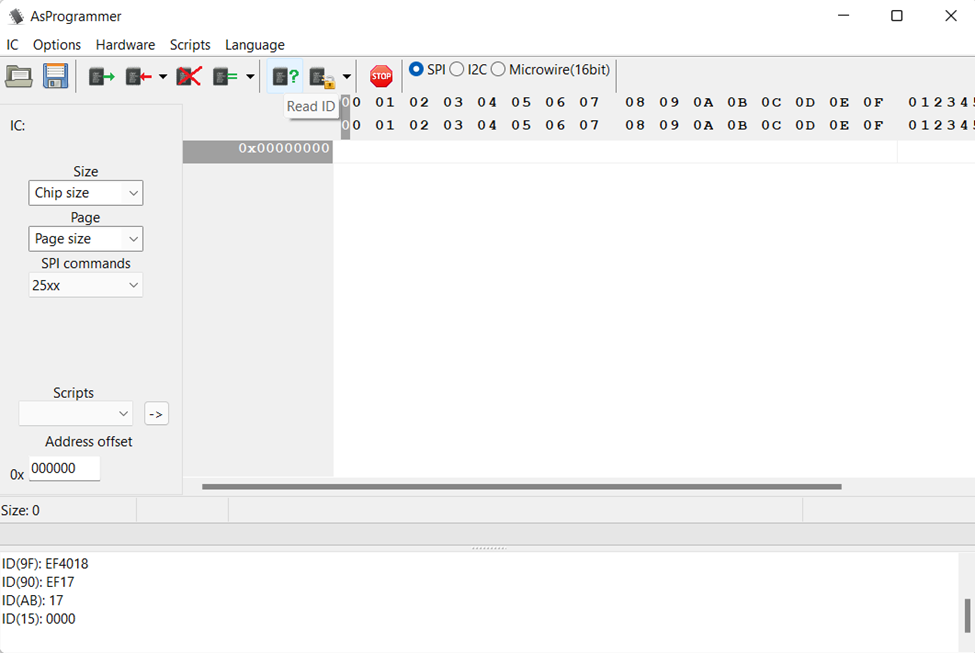
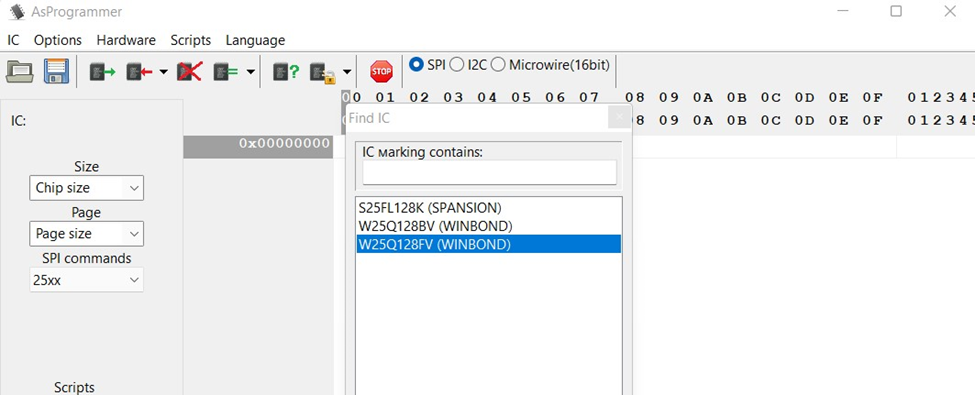
c. Next you’ll need to unprotect the chip by clicking the “Unprotect” button to the right of “Read ID”.

d. After Detecting/Selecting/Unprotecting the chip click the “Read IC” button. This reads the original bios from the chip.

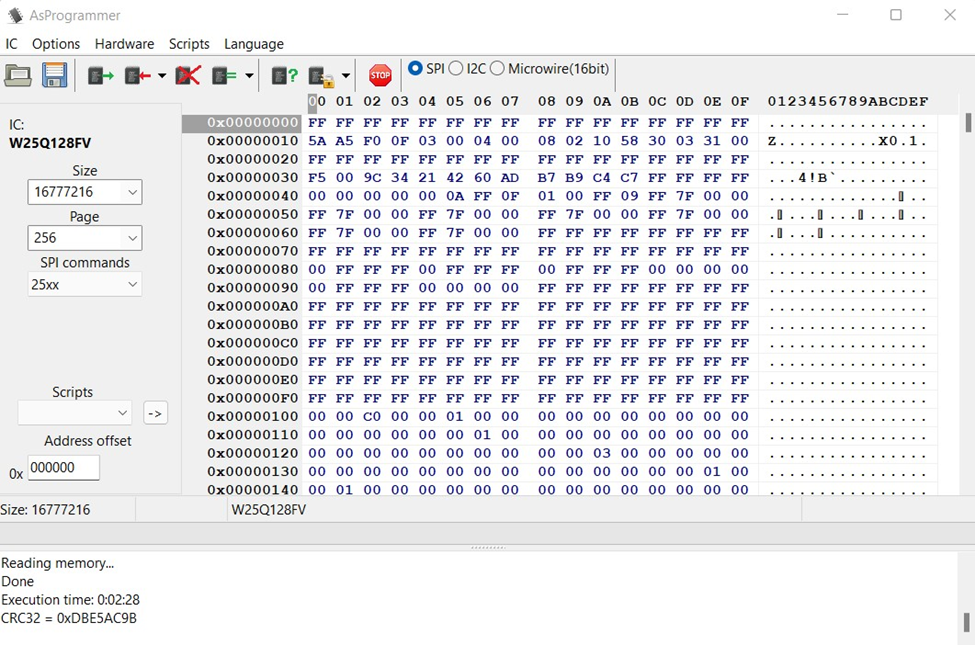
e. Once the read completes run a verification check by clicking the “Verify IC” button to make sure the image read into memory is clean.


f. At this point, if the verification succeeded without errors, I would strongly suggest saving the original bios as a backup copy. If you receive an error either the chip is still protected, cables are not connected correctly, or USB port is not supplying enough power to the mobo. Do not proceed with Step 3 if you do not have a clean backup.
- You’ll need SPI programmer software that can read the chip from the CH341A/Mobo SPI. Listed below are the 2 pieces of software that I have found that will read the chip:
-
Part 3: Erasing Chip
- After saving the original bios the next step is the click the “Erase IC” button. This will completely erase the contents of the chip and can take a few minutes.

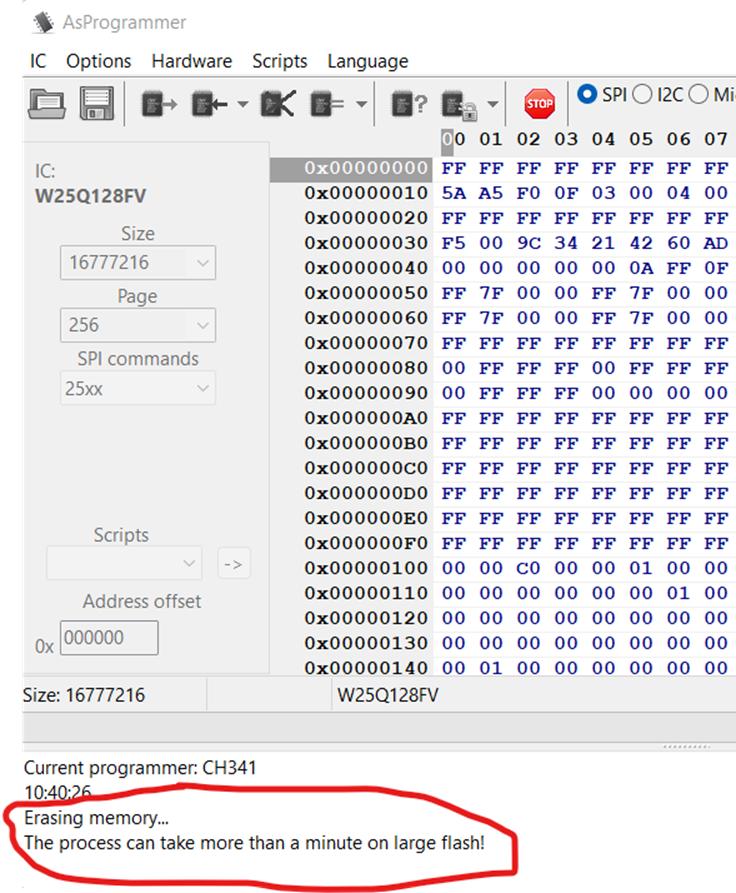
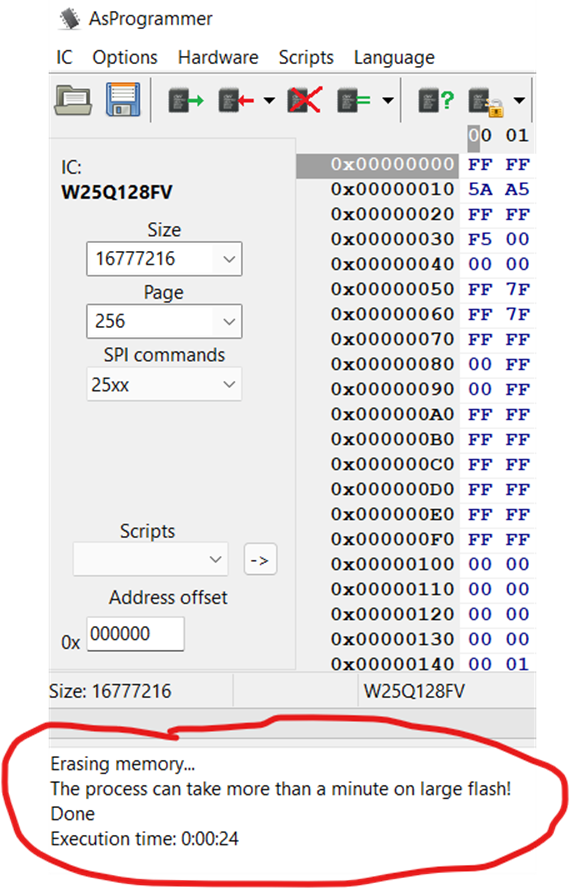
- After the Erase has completed, you’ll need to verify the chip was erased successfully by clicking the drop-down button next to the “Verify IC” button and selecting “Blank check”. Note whether the verification was successful or not before proceeding with the next step. Sometimes the chip must be erased twice before verification succeeds.

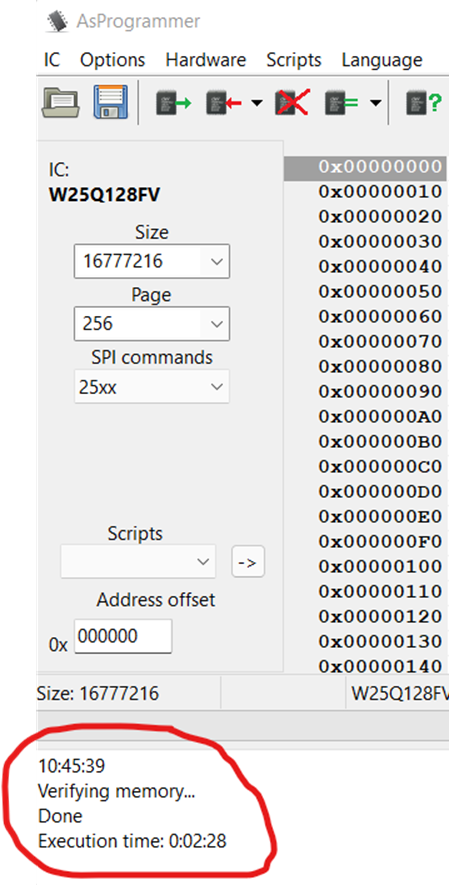
- After saving the original bios the next step is the click the “Erase IC” button. This will completely erase the contents of the chip and can take a few minutes.
-
Part 4: Reprogramming chip with modded bios
-
Open the modified bios file in AsProgrammer that you would like to flash to the chip.

-
Click the “Program IC” button to start the flash of the modified bios to the chip.

-
Click “Yes” in the pop-up window asking for confirmation to start the programming.
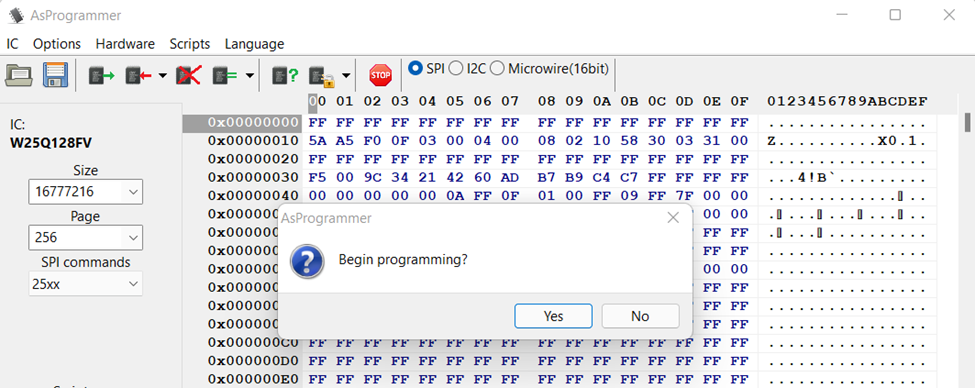
-
Programming can take several minutes to complete. There is a progress bar to show completion status.
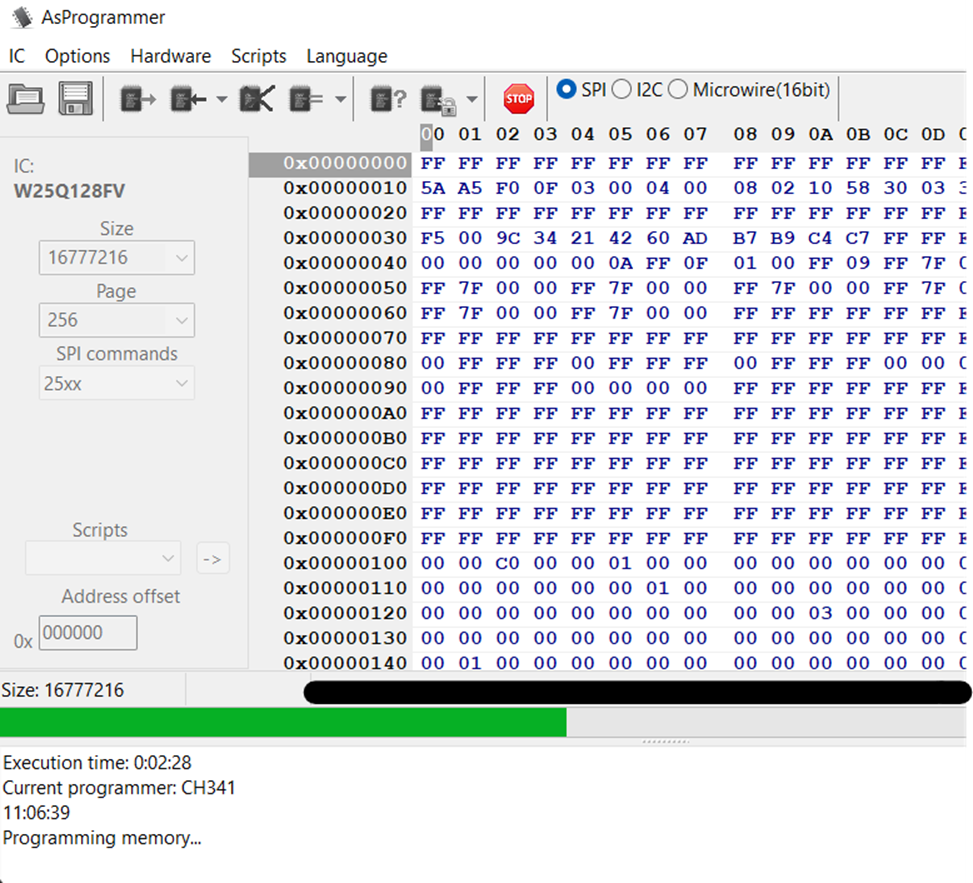 bolded text
bolded text
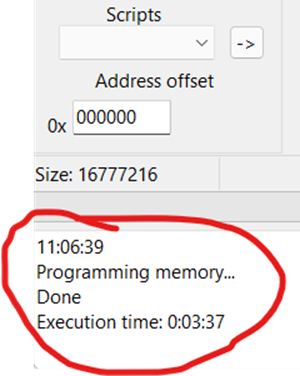
-
Once complete click the “Verify IC” button to verify the modified bios was flashed successfully.

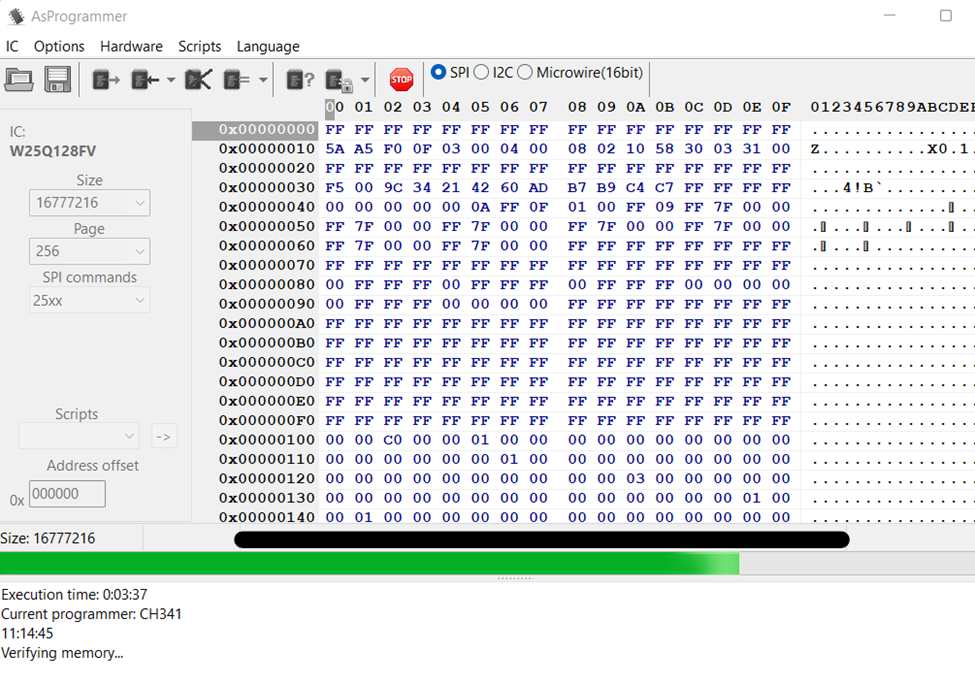
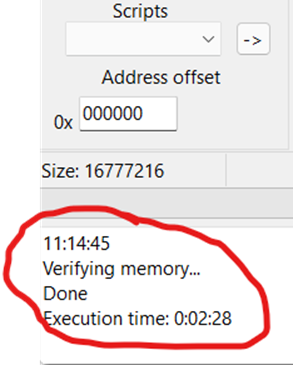
-
If all steps completed successfully you should be able to disconnect your SPI programmer from the mobo SPI header, insert your CMOS battery back in, plug the power cable back in and power it on. The machine takes about a minute or so to boot up and post, then it will reboot, power on and immediately power off and reboot again, and after that you should be able to access the bios menu at this point.
-
-
WatchGuard original post:

WatchGuard original prompt to access bios:
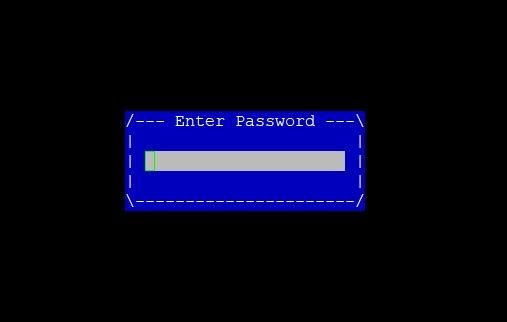
Mod_Bios post:

Mod_Bios Menu:
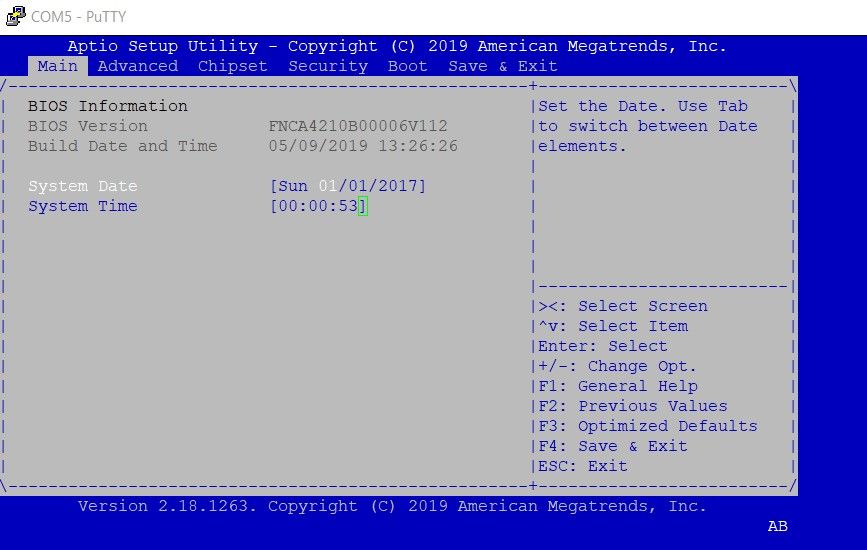
-
Side note: I would not enable Turbo Mode option in the modified bios if you are running a 6th gen processor. pfSense will hang on boot if it's enabled with a 6th gen processor. Works fine with a 7th gen processor.
Example of my configuration with 6th gen processor:
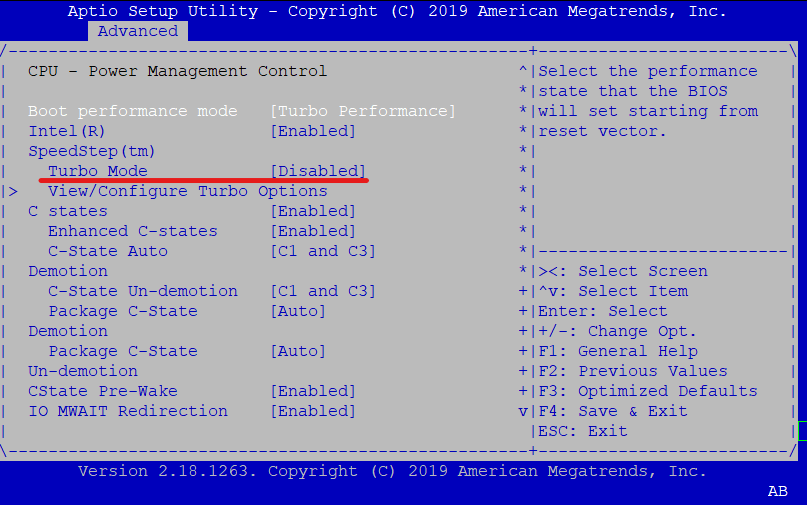
-
This post is deleted! -
After comparing notes with @stephenw10 it does appear the M370 and M470 have different chipsets, so this guide should only be used for the M370 unless you're feeling adventurous.
On the M370 when I run pciconf -lv I get this:
isab0@pci0:0:31:0: class=0x060100 card=0x72708086 chip=0xa1488086 rev=0x31 hdr=0x00
vendor = 'Intel Corporation'
device = 'B150 Chipset LPC/eSPI Controller'
class = bridge
subclass = PCI-ISAFor the M470 it says:
isab0@pci0:0:31:0: class=0x060100 card=0x72708086 chip=0xa1498086 rev=0x31 hdr=0x00
vendor = 'Intel Corporation'
device = 'C236 Chipset LPC/eSPI Controller'
class = bridge
subclass = PCI-ISA -
Hi all, i hope you're doing great.
@HangmansNoose001380 @stephenw10 @soupman @all in the post.What a great accomplishment have been made here, this is terrific!!! Thanks for the update info and hard work.
The fact that you can flash a generic image to the units brings more opportunities to improve computing capabilities and also made the units more Software Friendly.With standard limitations i have manage to install, pFSense (obviously) and some Hypervisors (Proxmox, VMWare Esxi), also some routing software (VyOS, Mikrotik RouterOS, OpenWRT) and Debian, just checking what could be a good a way to take advantage more efficiently and effective on the units.
I have only tested some i3 6100 with up to 32Gb Ram plus Some SATA SSD, but can assure you that on M370 Neither e3-1225v5 or e3-1240v5 or e3-1275v3 will work in the units, this looks like a Chipset limitations, as comments above.
Right now, i have 5 units (M370) brand new that were sitting on my office shelf. Actually 6, that one is running our beloved pFSense.
This updates give me hopes to prepare them and take advantage to build, maybe a Small VM cluster or how knows, some kind off weird project.
I have some CPUs (i5 6th and 7th gen, also a i7 7700 that maybe would work, using the Generic BIOS.
I'll be following up and help in anything I can, let's take this units to the next level.

Thanks all for your hard work.
Regards.
-
@nicknitro I can tell you that when I modded the bios I updated the Microcodes and the modules for video and network and I am currently running an i5-7500:
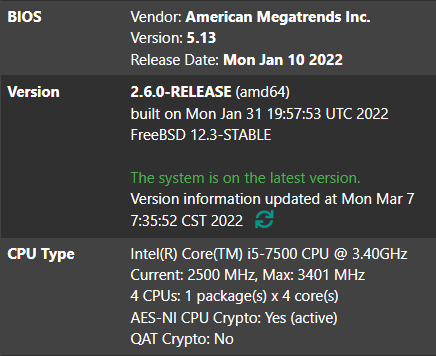
-
Hi,
hast anyone a watchguard t70 or t30 running pfsense? I can get one of these and plan to start with pfsense on it.
Mathias
-
The T30 is an ARM device so nope. The T70 can be used but there is no driver for the switch interfaces so it requires hardware mods to use those ports. Significant risk of destroying it!

https://forum.netgate.com/topic/151470/watchguard-firebox-t70Steve
-
I recovered the bios of the m370 and it is indeed unlocked.
My experience.
Laptop
usb-c (3.0 and 3.1) ---usb-c to usb a adapter---ch341A did not work. Drivers had to be installed manually. Still asprogrammer did not see the ch341aDesktop
usb 3.0 -- ch341A worked, drivers loaded automatically after install.
recovery done with the desktop.The ch341a is a risky board because of the 3.3v fault on it.
Thanks to all for the hard work and insights.